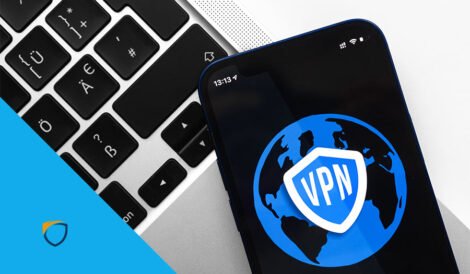In today’s digital age, the way we consume media has undergone a significant transformation. Gone are the days of physical media collections; now, we have the convenience of accessing an extensive array of content through the internet. Two primary methods for enjoying digital media are streaming and downloading. Both have their distinct advantages and disadvantages, and understanding the nuances can help you make the right choice based on your preferences and needs. In this comprehensive exploration, we will delve deeper into the pros and cons of streaming and downloading content.
1. Quality of Content
Streaming: Streaming content is incredibly convenient as it allows instant access to a wide variety of movies, TV shows, music, and more. However, the quality of your viewing or listening experience can be contingent on your internet connection. If you have a slow or unstable internet connection, you may experience lower video and audio quality, resulting in buffering, pixelation, or reduced sound clarity.
Downloading: On the other hand, downloading content provides a more consistent high-quality experience. Since the media is stored locally on your device, you can enjoy it at its best without worrying about the fluctuations of your internet connection.
2. Access and Convenience
Streaming: One of the most significant advantages of streaming is the sheer convenience of instant access. As long as you have an active internet connection, you can begin watching or listening to your chosen content immediately. This feature is particularly appealing to individuals who prefer on-the-fly consumption of media.
Downloading: Downloading content, however, necessitates some planning. You need to download the content in advance, which can be time-consuming, but once downloaded, it grants you the ability to enjoy it offline. This is an ideal option for travelers, commuters, or anyone who may face unreliable internet access.
3. Cost
Streaming: Many streaming services operate on a subscription-based model, requiring monthly fees. While some platforms offer free versions with advertisements, premium services can accumulate costs, especially if you subscribe to multiple platforms simultaneously.
Downloading: Downloading content typically involves paying per item or purchasing/renting content individually. While this may seem cost-effective upfront, it can add up if you consume a substantial amount of media.
4. Content Library
Streaming: Streaming platforms boast vast libraries of content, ranging from the latest blockbuster movies to classic TV series. However, the availability of specific titles can vary from one platform to another, and the content available may change over time due to licensing agreements.
Downloading: When you choose to download content, your selection is limited to what is available for purchase or rental. You won’t find the same breadth of options as with streaming services.
5. Offline Viewing
Streaming: While some streaming services offer limited offline viewing options by allowing you to download specific episodes or movies, it’s not as seamless as downloading content directly.
Downloading: The key strength of downloading is its ability to grant you offline access to your downloaded media. This means you can enjoy your favorite movies and TV shows during long flights or in remote areas without an internet connection.
6. Device Compatibility
Streaming: Streaming services are incredibly versatile when it comes to device compatibility. They work on a wide range of devices with internet access, including smartphones, tablets, smart TVs, gaming consoles, and computers.
Downloading: Compatibility when downloading content depends on the file format and the device’s capabilities. Some formats may not be compatible with certain devices, requiring you to convert or adjust settings to make them work.
7. Data Usage
Streaming: Streaming media consumes data, and the amount of data used can vary depending on the quality of the stream. High-definition streaming can quickly deplete your data plan, which is a significant consideration for those with limited data.
Downloading: Once you’ve downloaded content, it doesn’t consume additional data when you play it. This makes downloading an attractive option for individuals with restricted data plans.
8. Content Ownership
Streaming: When you stream content, you essentially rent access to it through your subscription. You don’t own the content, which means you can lose access if you cancel your subscription or if the content is removed from the platform.
Downloading: Downloaded content is yours to keep. Whether you purchase it or rent it, you have ownership rights, and it remains accessible on your device, even if you switch platforms or cancel subscriptions.
9. Legal and Copyright Considerations
Streaming: Streaming services operate under licensing agreements, which can lead to content availability varying by region. Some content may not be accessible due to these agreements.
Downloading: Downloading content from unauthorized sources can lead to copyright violations and legal issues. It’s essential to obtain content legally to avoid potential legal consequences.
10. Buffering and Loading Times
Streaming: A common frustration with streaming is the potential for buffering and loading delays, particularly if you have a slower internet connection. These interruptions can disrupt your viewing experience.
Downloading: Downloaded content starts instantly with no buffering or loading times, ensuring a seamless and uninterrupted experience.
11. Security and Privacy
Streaming: Streaming services often collect data about your viewing habits and preferences, which can raise privacy concerns for some users. They may also target advertisements based on your watching history.
Downloading: Downloaded content is stored locally on your device, reducing privacy risks associated with online streaming. Your viewing habits are not monitored or used for targeted advertising.
12. Content Availability
Streaming: The availability of content on streaming platforms is dynamic and can change frequently. Titles may be added or removed based on licensing agreements, which can lead to the disappointment of finding a favorite show suddenly unavailable.
Downloading: Once you’ve downloaded content, it remains accessible on your device, unaffected by changes on the platform. This provides more stability and consistency in your media library.
13. Storage Management
Streaming: Streaming requires no storage management on your part. Since the content is hosted on the service provider’s servers, you don’t need to worry about running out of space on your devices.
Downloading: Downloaded content takes up space on your device’s storage, and you may need to manage storage to ensure you have enough room for new downloads. This becomes more crucial if you have a limited storage capacity.
14. Cost of Internet Connection
Streaming: To enjoy seamless streaming, you need a stable and potentially high-speed internet connection. A poor connection can lead to buffering and interruptions, affecting your viewing experience.
Downloading: After you’ve downloaded content, your internet speed becomes less critical since you’re playing the content locally from your device.
15. User Experience
Streaming: Streaming services are designed to be user-friendly and easy to navigate, making it accessible to a wide range of users. However, your experience can be influenced by the quality of your internet connection and the service’s interface.
Downloading: Downloaded content offers a reliable and consistent user experience since playback primarily depends on your device’s capabilities. There are no external factors, such as internet speed, to impact your viewing or listening experience.
In conclusion, both streaming and downloading have their unique advantages and drawbacks, making each method suitable for different scenarios and preferences. Whether you choose streaming or downloading, the ultimate goal is to enjoy your favorite content on your terms, with consideration given to factors like content quality, cost, convenience, and privacy. As technology continues to evolve, both methods




